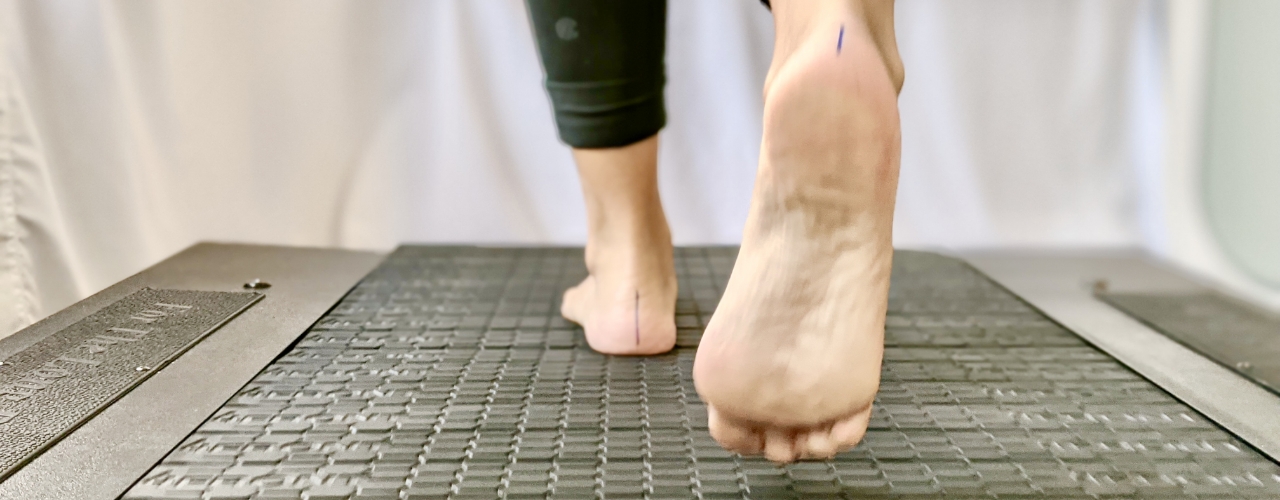
Running Gait Analysis can be used to identify disturbances in gait mechanics that can potentially result in injury and also be used to gain efficiency when running.
Analysis is done by running on a treadmill while the therapist looks at the feet, knees, hips, spine and arm swing. They are looking for any disturbances and depending on the results of the analysis, the therapist can recommend different treatment options or provide information on a proper running shoe.
If you are a runner, and you are looking to improve your technique and form, or if you are struggling with balance issues and looking to improve your gait, you have come to the right place. At Sports Medicine Experts, our running and gait assessments are used as a way to figure out how gait efficiency can be increased, in order to improve overall performance and reduce your risk of injury.
If you are interested in improving your gait, whether it’s for walking, running, or balance purposes, contact our Dundas & Ancaster, ON physiotherapy office today. Our licensed physiotherapists can help you reach your personal goals!
Gait Assessments
If you frequently notice an imbalance, dizziness, or unsteadiness that makes you feel as if you may fall over at any given time, it is a sign that you may be living with a gait disorder. Gait issues typically develop from one of the following conditions:
- Injury or ailment. Even if your brain and nervous system are working in harmony with one another, a sudden injury, disease, or other ailment causing muscle weakness can interfere with your balance and make it difficult to keep yourself upright.
- Neurological issues. This may include Parkinson’s disease, brain injury, or stroke. Anything that affects your neurological system can also impact your balance.
- Benign paroxysmal positional vertigo (BPPV). This occurs when calcium debris breaks off in the inner ear, causing issues with balance.
Our gait assessments will determine 1) if you are living with a gait disorder, and 2) what the root cause of your gait disorder is.
If our Dundas & Ancaster, ON physiotherapist determines that you are indeed living with a gait disorder, he or she will get you started on a gait training treatment plan. Gait training will include activities to not only improve gait mechanics, but also increase your confidence and safety in navigating across different terrains and around different obstacles. Our physiotherapist will also evaluate your need for an assistive device, or perhaps make modifications to a device you are currently using.
Both static and dynamic balance training will likely also be incorporated into your physiotherapy treatment to help your body learn how to better respond to environmental challenges to your balance. For example, you may be asked to stand on one leg while performing a mentally-challenging task, such as reciting the alphabet or reading a paragraph of text out loud. Our physiotherapist will also teach you balance strategies to help mitigate fall risk.
Endurance training may also be used, not just to improve muscle endurance for activity, but also to improve aerobic capacity for activity, both of which will reduce fatigue as a risk factor for falls when walking or completing daily tasks.
Running Assessments
Running assessments are used for athletes in one of two categories: 1) runners who have been injured and are looking to get back into the sport, and 2) runners who are looking to improve their form and physical performance.
Whatever the case may be, Sports Medicine Experts can get you running to your full potential! Many running assessments use video to record a patient’s running techniques. This helps the physiotherapist and patient look back at the footage together to focus in on problem areas and how they can be improved.
This form of diagnostic testing can evaluate several parts of your body at once, such as:
- Cadence
- Pelvic control
- Foot strike
- Base of support
- Vertical displacement
When completing a running assessment, it is likely that you will be asked to run on a treadmill for a few minutes at differing speeds. At each speed, a recording will be taken of your side and your back. Our physiotherapist will then slow down each recording to pinpoint which areas are at risk for sustaining an injury, as well as which ones could use efficiency improvement.
If our physiotherapist detects a fault, he or she may decide to conduct a physical evaluation to determine the underlying causes of said fault by examining the joint(s) and muscle capacity. A treatment plan will then be designed to correct the fault.
Get started on your assessment today!
Do you think you could benefit from a running or gait assessment? Contact Sports Medicine Experts today! Request a consultation with one of our Dundas & Ancaster, ON physiotherapists, so you can get started on the first steps to running and moving at your best ability!

